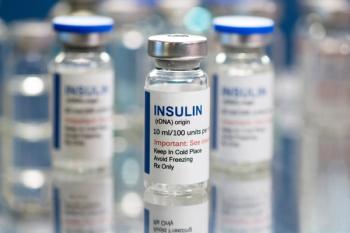
Preparing Future Pharmacists to Recognize a Mental Health Crisis and Take Action
Mental health first aid training is being incorporated into pharmacy curricula to address suicide prevention and other crises.
Mental health first aid (MHFA) is increasingly becoming a part of pharmacy education, and training more pharmacists to recognize patients in crisis may be critical for saving lives.
A session of the American Association of Colleges of Pharmacy (AACP) Annual Meeting’s Virtual Pharmacy Education 2020, July 13-31, provided data on mental health in the United States and Australia, and offered insights into training programs for pharmacy students to apply mental health first aid.1
During the session, presenters from Washington State University and the University of Sydney shared statistics for pharmacist interactions with patients at risk for suicide. They revealed that 85% of pharmacists in Australia and Canada had interacted on the job with someone at risk of suicide and 16% had 6 or more such interactions. In the United States, 22.4% of pharmacists knew a patient who died by suicide and 21.6% knew a patient who requested a lethal medication dose.1
Globally, 800,000 people die by suicide and it is one of the top 10 causes of death in people aged 15 to 49 years, according to the presenters. In both the United States and Australia, the rates of suicide are increasing. The United States saw a 31% increase in the suicide rate between 2001 and 2017, and Australia’s suicide rate increased by 9% from 2016 to 2017.1
“I think we can do better. We can decrease the number of people that die by suicide,” said panelist Anne Kim, PharmD, MPh, MIT, assistant professor, pharmacotherapy, Washington State University (WSU).1
The data also showed that the majority of people who die by suicide are male: 69.67% in the United States and 75% in Australia.
“Men are much more likely to die by suicide, and that is because men use much more lethal means. Women are much more likely to attempt (suicide),” Kim said.1
For undergraduate students in the United States, the rates for suicide ideation and suicide attempts increase with exposure to stress. These stress exposures include life-changing events, such as death of a loved one, a breakup with a significant partner, or a change in career path, according to Kim. Suicide attempts for students with 0 stress events was 3.3% in 2018, and that percentage increases with each additional stress event. Students with 6 or more stress events had a 21.1% rate of suicide attempts in 2018.1
Rebekah Moles, BPharm, PhD, associate professor, pharmacy practice at the University of Sydney (USYD), said the statistics show how important it is that pharmacists be trained to recognize a mental health crisis and to take action for improving patient outcomes. “As health care professionals, we have plenty of opportunities to intervene,” she said.1
MHFA is designed to assist a person who is developing a mental health problem, experiencing the worsening of a mental health condition, or in crisis. In addition to suicide, mental health crisis situations include panic attacks, psychosis, and depression.1 MHFA is to be provided until professional help is received or the crisis is resolved.2
Sarira El-Den, BPharm (Hons I), MIPH PhD, GradCertEdStud (Higher Ed), lecturer, USYD, cited Australia’s MHFA action plan, called ALGEE, as a model. The ALGEE plan also is utilized in the United States, and includes:1
- Approach, assess, and assist with any crisis
- Listen and communicate non-judgmentally
- Give support and information
- Encourage appropriate professional help
- Encourage other supports
At WSU College of Pharmacy and Pharmaceutical Studies, MHFA and suicide intervention training are incorporated into the curricula. A big part of this training is to move a future pharmacist from being hesitant to address a mental health issue to taking action. Students also are trained to be aware of their own mental health needs.2
“We have students get acquainted with resources in their local communities,” said WSU’s Damianne Brand-Eubanks, PharmD, assistant professor, pharmacotherapy and director of student success.1
The 2-credit elective MHFA course in is offered to PY2 and PY3 students at WSU.
“They come in with a baseline understanding of the disease states. We help them become more aware of the stigma that they themselves carry, whether they know it or not,” Kim said.1
Thus far, the course has proven to be popular, according to Brand-Eubanks. “The classes reach capacity with a waitlist,” she added.1
In Australia, at least one-third of pharmacy schools offer MHFA courses to pharmacy students, according to El-Den. “At the University of Sydney, we have embedded standard mental health training into [degree programs],” she said.1
El-Den said USYD offers MHFA for BPharm and MPharm degree candidates, and these courses are open to the public as well. The university is continually coming up with new simulated case studies to keep students engaged and informed.1
El-Den said the MHFA training does lead to improved outcomes.1 At WSU, pre- and post-assessments conducted by instructors show that student pharmacists do gain confidence in recognizing suicide warning signs in patients, as well as in coworkers, family members, and friends.2
REFERENCES
- El-Den S, Moles R, Robinson J, Kim A, Brand-Eubanks D. Mental Health First Aid: Increasing Student Pharmacist Preparedness to Respond Through Simulation, Presented at: American Association of Colleges of Pharmacy (AACP) Annual Meeting, Virtual Pharmacy Education 2020; July 22, 2020; Accessed August 3, 2020.
- Coppock K. Program Offers Training in Suicide Prevention and Awareness. Pharmacy Times website. https://www.pharmacytimes.com/conferences/aacp-2019/program-offers-training-in-suicide-awareness-and-prevention Published July 18, 2019. Accessed August 4, 2020.
Newsletter
Stay informed on drug updates, treatment guidelines, and pharmacy practice trends—subscribe to Pharmacy Times for weekly clinical insights.













































































































































































































